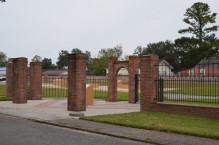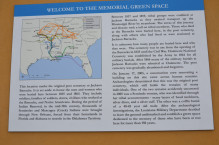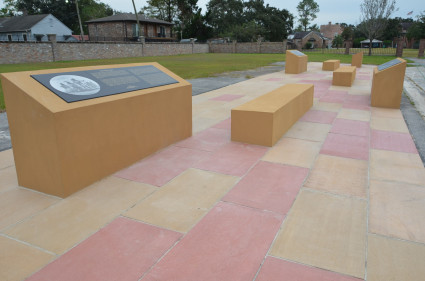
To arrange a visit the cemetery please contact the Jackson Barracks Museum 504-278-8024 or bev.a.boyko.nfg@mail.mil
It is unknown how many people are buried here and who they were. The cemetery was in use from the post’s opening, in 1837, until the Civil War. In 1864 Chalmette National Cemetery was established by the occupying Union Army. All new military burials were at Chalmette and after 1866 many of the military burials interred at Jackson Barracks were reburied at Chalmette. The post cemetery was gradually abandoned and forgotten. Buildings went up on the site, leaving no visible signs of the burial grounds.
During the period of Indian Removal in the mid-19th century, thousands of Seminoles and Muscogee (Creek) Indians passed through New Orleans, forced from their homelands in Florida and Alabama to resettle in the Oklahoma Territory. Between 1837 and 1859, many of the tribal groups were confined at Jackson Barracks as they awaited transport up the Mississippi River by steamboat. Those who died at this way station were buried here, in the post cemetery, along with others who lived or were stationed at Jackson Barracks.


On January 17, 2005, a construction crew renovating a building on the site came across human remains. Archeologists determined that this was the original post cemetery and still held the remains of an unknown number of men and women. One of the two bodies accidently uncovered in 2005 was a Seminole woman, who was identified through her tribal jewelry, the layers of bead necklaces and silver mementoes, commonly worn at the time. After the archeological investigations it was decided to leave all the burials undisturbed and establish a memorial green space to the memory of those who have been at rest here for more than 150 years.
